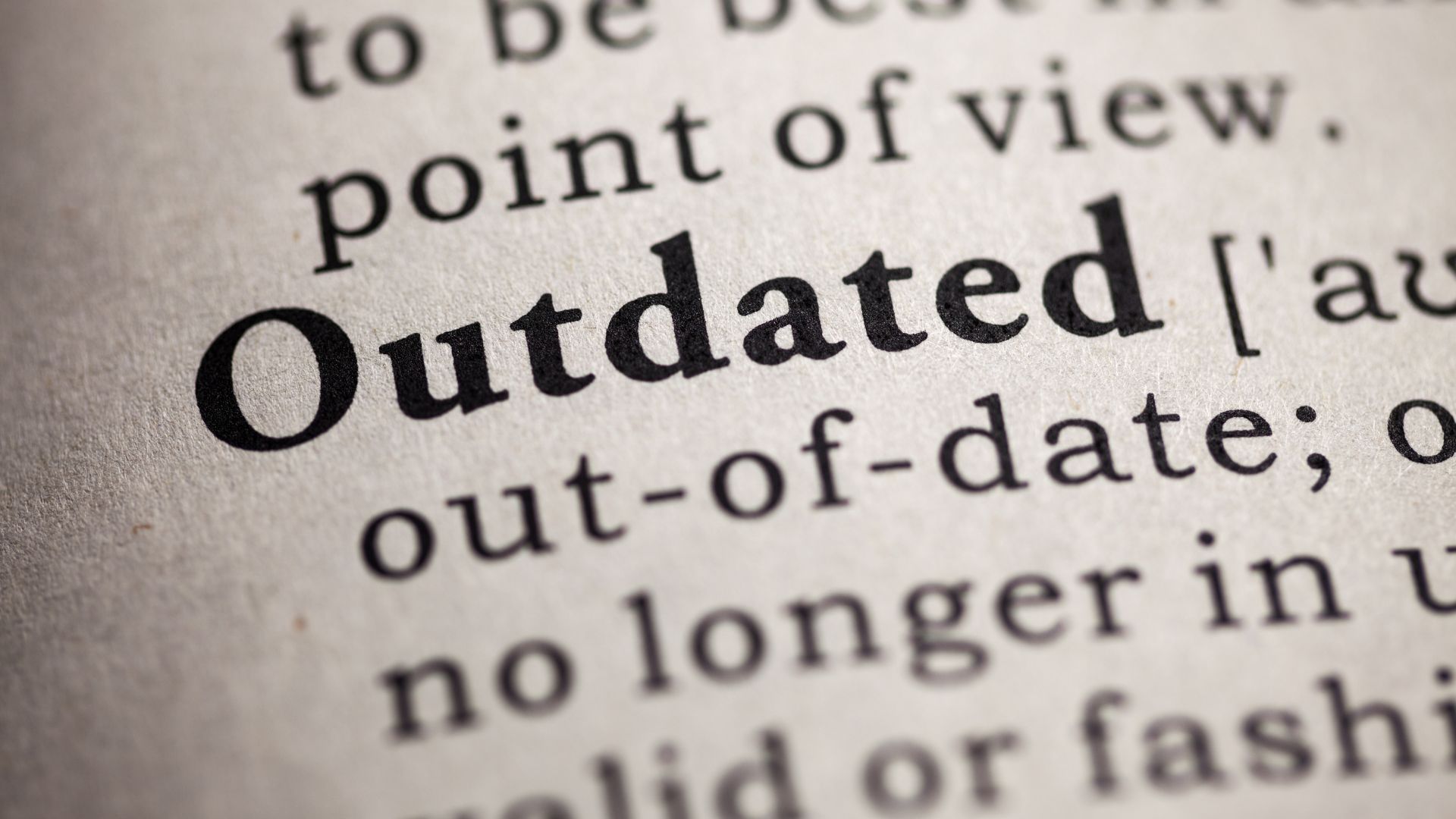Running a business takes priority — we get it. Your website, built years ago, did the job back then. But while you’ve been focused on growing your business, the digital world hasn’t exactly stood still. A WordPress site that felt fine in 2017 might now be holding you back. And it’s more common than you think.
Here’s how to tell if your WordPress site is quietly falling behind — and what that might mean for your business.
1. Your Design Looks Outdated Compared to Competitors

Design trends shift. Visitors now expect clean layouts, modern fonts, intuitive navigation and breathing space — all of which affect how trustworthy and professional your site feels.
Ask yourself: does your site still look like it’s from 2015? If it’s got cluttered pages, hard-to-read fonts or a lack of visual hierarchy, users might not stick around. Meanwhile, your competitors may be making stronger first impressions with fresher designs.
Visual appeal matters more than many realise. A clunky layout or an overwhelming homepage can quietly suggest to visitors that you haven’t invested in your business lately. It might also imply, rightly or wrongly, that your content is out of date. Subtle signals like inconsistent branding or pixelated images can leave a poor impression.
What can you do? Consider evaluating your design with a critical eye, or asking someone outside your business to give honest feedback. If you’re seeing a high bounce rate in analytics, design could be a factor. A modern theme with clean lines, clear fonts, and intuitive structure can change how your business is perceived instantly.
2. Your Site Isn’t Mobile-Friendly or Responsive
More than half of web traffic now comes from mobile devices. If your site isn’t designed to adapt smoothly to different screen sizes, you’re likely frustrating visitors and losing leads.
Not sure how mobile-friendly your site is? Try Google’s Mobile-Friendly Test — it’ll show you exactly where your site might be falling short. A site that pinches, zooms or glitches on mobile isn’t just inconvenient — it’s a red flag to Google too.
Mobile-first design is now the standard, not an extra. Visitors expect your content to adjust to screens without weird cropping, sideways scrolling or missing buttons. If your calls-to-action can’t be tapped easily or menus become unreadable on smaller screens, that user may simply move on.
Mobile-friendliness affects everything from bounce rate to lead generation. It also influences SEO more than most people realise. Google indexes your site based on its mobile version. If your site isn’t responsive, your search rankings will reflect that.
3. It Loads Slowly and Struggles with Performance

Speed matters. A slow-loading site doesn’t just test your visitors’ patience — it can tank your search rankings. And often, older sites are weighed down by outdated themes, bloated plugins or hosting setups that just can’t keep up.
Try a free speed test with tools like GTmetrix. If you’re seeing long load times or performance warnings, it could be your site’s architecture showing its age.
Things like oversized images, lack of caching, or inefficient code can build up over time. Visitors expect websites to load in two seconds or less. Anything longer and they’re gone. This slow exit rate doesn’t just cost you leads — it affects how Google ranks your pages too.
Other things that slow down a site? Shared hosting that can’t handle increased traffic, multiple redirect chains, or old JavaScript libraries that conflict with newer plugins. If your site regularly loads slowly on both desktop and mobile, it’s time to consider a full performance audit.
4. It’s Not Compatible with Modern Plugins
Plugins evolve. Some get replaced, others stop being supported. If your site relies on old plugins that haven’t been updated in years, you risk sudden breakages — or worse, security holes.
You might notice odd behaviour in your admin dashboard or features that no longer work properly. This usually means your WordPress version, theme or PHP settings are out of step with newer tools.
Compatibility is key to staying secure and functional. Developers drop support for outdated versions over time, which means your site could stop working properly after a WordPress update. Or, worse, it could become vulnerable to known exploits.
Regular plugin audits are essential. If you see multiple warnings about deprecated code or compatibility, that’s your site telling you it needs help. Using tools like WP Health or Query Monitor can show you what’s failing under the surface.
5. You’re Experiencing Frequent Security Issues

Getting spammed, blacklisted, or dealing with random downtime? These aren’t just bad luck — they’re signs your site might be vulnerable. Outdated themes and plugins often have known exploits, and once your site is on a hacker’s radar, it’s rarely a one-off.
Modern security standards change quickly. An old WordPress site left untouched for years becomes an easy target. Hackers often use bots to scan thousands of sites at once, looking for the weakest ones. A lack of updates is the equivalent of leaving the door unlocked.
Security plugins and firewalls can help, but only if the underlying software is kept current. If you’re frequently restoring from backup or wondering why things keep going wrong, that’s a red flag.
And it’s not just direct attacks you should worry about. Old code may not be able to withstand automated scans, brute force logins, or injected spam links that damage your reputation. Maintenance isn’t just about peace of mind — it’s about prevention.
A tired-looking or underperforming website doesn’t just affect your visitors — it reflects how your brand shows up online. But the good news? These problems are all fixable. Whether it’s a redesign, rebuild or some professional WordPress support from Fly High Web, you don’t have to tackle it alone.
Sometimes, the first step is just recognising the signs. The next one? Choosing to do something about it. And the sooner you do, the sooner your website can start working as hard as you do.
If your website is showing any of these signs, now might be the right time to schedule a proper check-up. A refreshed website can mean faster load times, better SEO, more leads, and a smoother experience for your visitors. Fly High Web can help assess what’s working, what’s outdated, and how to improve it all — quickly, affordably, and without drama.
After all, your website isn’t just a brochure — it’s your front door. Make sure it’s inviting, up-to-date, and ready for whatever comes next.
